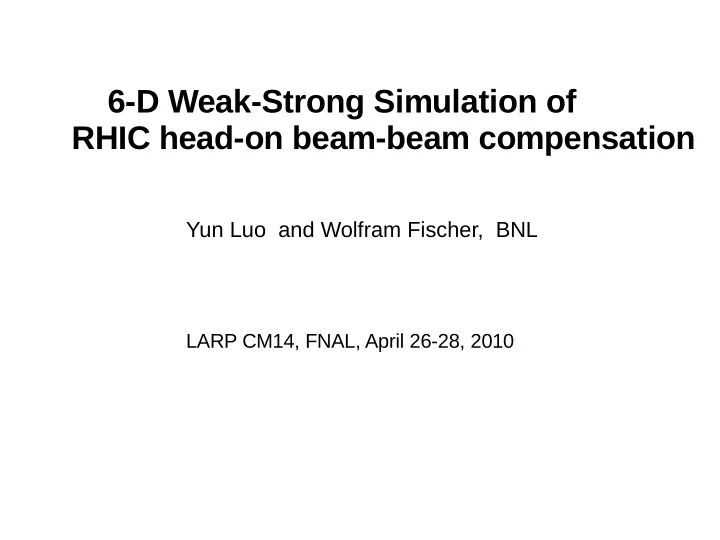

6-D Weak-Strong Simulation of RHIC head-on beam-beam compensation Yun Luo and Wolfram Fischer, BNL LARP CM14, FNAL, April 26-28, 2010
What's New in Coding Since CM13 What's New in Coding Since CM13 1. 6-D weak-strong beam-beam interaction a la Hirata at IP6 and IP8 where p-p interactions take place 2. E-lens Modeling 2.0 meter long 1.0 meter from IP10 8 slices, each slice modeled as ( drift -- 4d beam-beam kick --- drift ) 3. Re-did all previous studies with Yun's code SimTrack
DA versus compensation strength
DA with Q'' and phase adjustment
DA versus electron beam size
Relative beam loss with and without HBBC
Relative beam loss with and without phase adjustment
Relative beam loss with and without Q'' corrected
Relative beam loss with proton tunes
Relative beam loss with electron size
Relative beam loss with p-e X/Y misalignment
Relative beam loss with noise in electron current
What to do next 1. Benchmark the RHIC observed beam-beam lifetime with simulation 2. Compare lifetime results with BBSIM (Y-J. Kim ) 3. Predict RHIC beam-beam lifetime in future runs All simulation results reported here can be found in following two BNL C-AD AP Notes: 1) Y. Luo and W. Fischer, 6-D weak-strong beam-beam simulation study of proton lifetime in presence of head-on beam-beam compensation in the RHIC , April, 2010 2) Y. Luo and W. Fischer, Simulation study of dynamic aperture with head-on beam- beam compensation in the RHIC , April, 2010
Recommend
More recommend